We created an App in order to control an Arduino UNO via Bluetooth. The Arduino controls a servomotor and an UV LED.
Materials:
Bluetooth modul HC-05 ( for +5V)
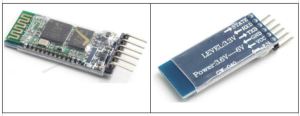
UV LED or any other LED
Circuit:
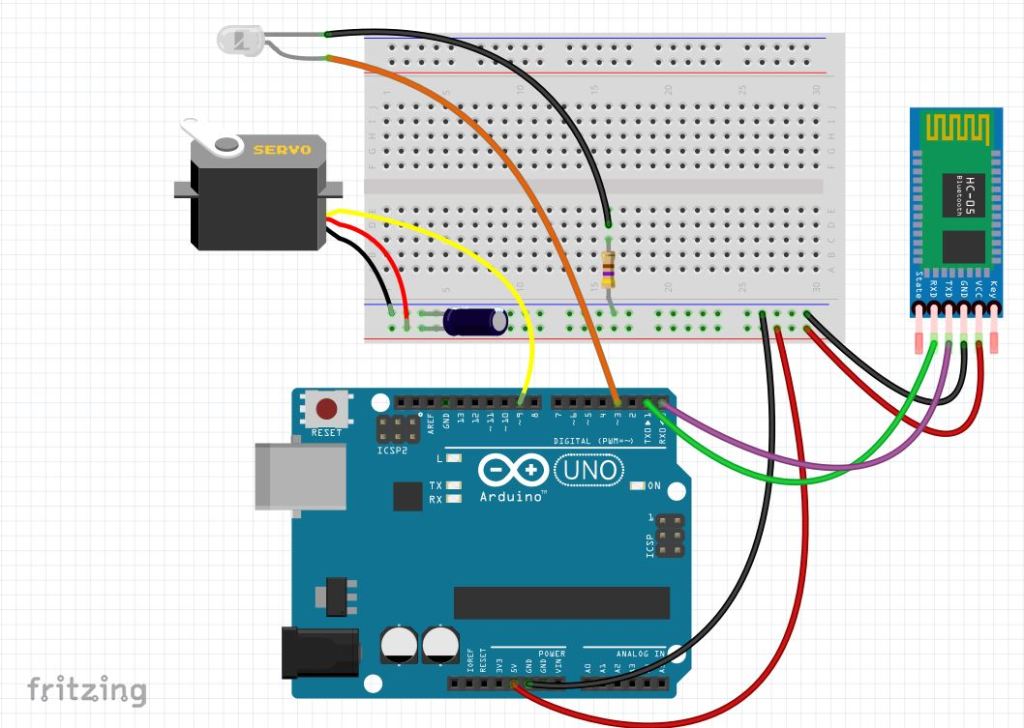
Pin connections:
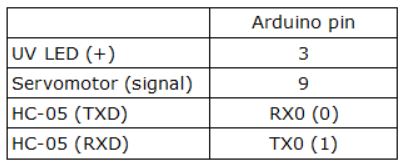
App with MIT AppInventor:
For more information and tutorials visit their website:
We created a very simple App that has a button to connect to the Bluetooth module and three buttons as interface with the user.
APP interface:
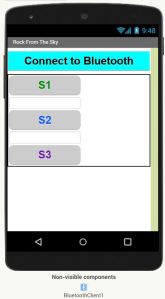
The first part of the code searches for the Bluetooth devices that are available in your surroundings and displays a list where you can then choose your HC-05 module. Once you pick your Bluetooth module, the App will display the message „Connected“:
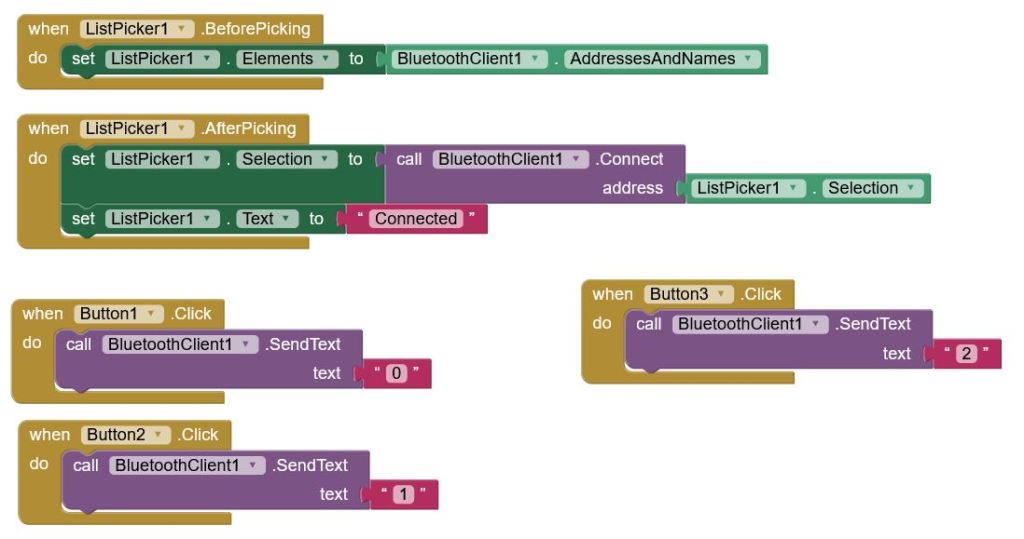
The second part of the code just tells the Bluetooth module which text to send depending on which Buttons the user just clicked.
Arduino code:
The main loop calls three different functions depending on the value that the Bluetooth module received. This value depends on the button that the user clicked on the interface.
IMPORTANT: while uploading the code to your Arduino, you have to disconnect the HC-05 module!
/************* www-mstronik.blog *************/
#include <Servo.h>
#include <EEPROM.h>
int servoPin = 9;
int LEDpin = 3;
char incoming_value;
int pos_adr, last_pos;
Servo mvservo;
void setup() {
// put your setup code here, to run once:
pos_adr = 1;
Serial.begin(9600);
pinMode(LEDpin, OUTPUT);
last_pos = EEPROM.read(pos_adr);
//mvservo.write(0);
go_to_0();
mvservo.attach(servoPin);
digitalWrite (LEDpin,LOW);
incoming_value = 3;
}
void loop() {
// put your main code here, to run repeatedly:
if(Serial.available() > 0)
{
incoming_value = Serial.read();
//Serial.print(incoming_value);
//Serial.print("\n");
switch (incoming_value){
case '0':
seq_1();
read_pos();
digitalWrite (LEDpin,LOW);
break;
case '1':
seq_2();
read_pos();
digitalWrite (LEDpin,LOW);
break;
case '2':
seq_3();
read_pos();
digitalWrite (LEDpin,LOW);
break;
case '3':
break;
}
}
}
/**************** FUNCTIONS ******************/
void read_pos(){
int servo_last = mvservo.read();
EEPROM.write(pos_adr, servo_last);
last_pos = EEPROM.read(pos_adr);
}
void go_to_0(){
int xpos;
for(xpos = last_pos; xpos>0; xpos--)
{
mvservo.write(xpos);
delay(50);
}
}
void go_to_180(){
int xpos;
for(xpos = last_pos; xpos<180; xpos++)
{
mvservo.write(xpos);
delay(50);
}
}
void rotate_45L()
{ int xpos;
for(xpos = 45; xpos>0; xpos--)
{
mvservo.write(xpos);
delay(50);
}
}
void rotate_45R()
{int xpos;
for(xpos = 0; xpos < 45; xpos++)
{
mvservo.write(xpos);
delay(50);
}
}
void rot_180()
{int xpos;
for(xpos = 180; xpos >0; xpos--)
{
mvservo.write(xpos);
delay(50);
}
}
void seq_1(){
digitalWrite(LEDpin,HIGH);
go_to_180();
rot_180();
delay(200);
go_to_0();
}
void seq_2(){
digitalWrite(LEDpin,HIGH);
rotate_45R();
rotate_45L();
digitalWrite(LEDpin,LOW);
delay(500);
digitalWrite(LEDpin,HIGH);
rotate_45R();
rotate_45L();
}
void seq_3(){
digitalWrite(LEDpin,HIGH);
rotate_45R();
rotate_45L();
rotate_45R();
digitalWrite(LEDpin,LOW);
delay(250);
digitalWrite(LEDpin,HIGH);
rotate_45L();
rotate_45R();
rotate_45L();
digitalWrite(LEDpin,LOW);
delay(700);
digitalWrite(LEDpin,HIGH);
rotate_45R();
rotate_45L();
}Examples:
A comet:
A haunted house:
Hinterlasse einen Kommentar